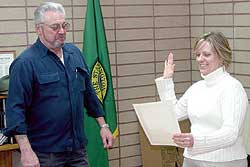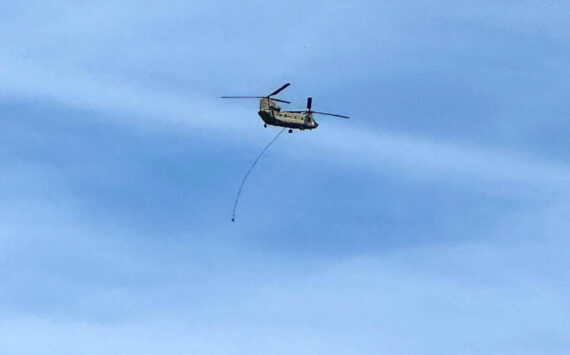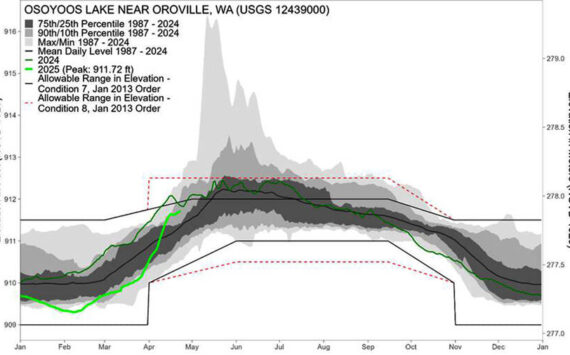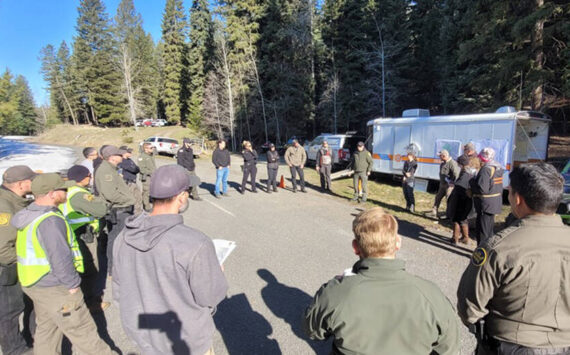
Photo by Gary DeVonOroville Mayor Chuck Spieth swears in newly elected councilwoman Neysa Roley to the Oroville City Council. The ceremony took place prior to the first council meeting of the new year. That meeting was held on Wednesday, Jan. 2, rather th
OROVILLE – Oroville approved regulations protecting “critical areas” while the city hammers out a new ordinance required by the state.
The city council unanimously approved the “interim” regulations at their first meeting of the new year. The “Oroville Critical Areas Ordinance” is currently in draft form. This draft will be used by the city until the final ordinance is approved following public input. The ordinance is required under the state’s Growth Management Act.
“The state requires all cities and counties pass an ordinance designating, classifying and protecting critical areas as part of their comprehensive plan,” said Oroville City Planner Chris Branch, who asked the council’s approval of the interim measures last week.
“The ordinance we have been using until recently has been in effect since 1995. As of Dec. 31, 2007 all cities and counties are required to update and use the new law as amended in the Growth Management Act. This requires we must use the best available science,” said Branch.
Branch described wetlands as a major concern to the city. “Until now we didn’t have specific critical areas regulations in wetlands, we used the Shoreline Master Program and floodplain designation to determine what could and couldn’t be done within these areas,” he said.
“And Oroville avoided annexing wetlands for years,” he said.
Nestled between two rivers, Oroville is basically confined by water, according to Branch. Recent annexations on the east side of Lake Osoyoos have driven home the need to make changes to the city’s current ordinance.
“Our Shorelines Master Program is not applicable to these annexed areas. Right now we can only use the county’s Shoreline Master Program and theirs is sorely lacking… they’re in the middle of an update,” said Branch.
Oroville’s Critical Areas regulations would allow only limited vegetation removal within 25 feet of the Okanogan River. For the Similkameen River there is a 50 foot buffer where no vegetation removal would be allowed, according to Branch.
Violations of the ordinance will carry monetary penalties, according to the draft. It lists a $100 fine for the first day, $200 for the second and so on increasing by $100 each day up to four days. For each additional day over four there is a $500 a day fine.
Areas where vegetation had been removed prior to the new rules would be grandfathered in, according to Branch, who adds people with lawns growing right up to the shoreline can still groom them.
“Fish and Wildlife has their own rules that designate a 100-foot riparian area be established in the more suburban areas,” said Branch.
Branch adds that here are ways of reducing this buffer by half by revegetating the area with native plants.
A draft of the “Amendments for the Designation, Classification and Protection of Critical Areas” to Oroville’s comprehensive plan has been completed and is available for review at city hall. Branch hopes to have the document available on the city’s webpage http://oroville-wa.com in the near future.
The regulations in the draft ordinance are the current law while awaiting final approval by the council after seeking public input. The interim rules will be in effect during a 60-day state agency review period. Hearings will be held in late February and early March for final consideration, potential revision and adoption of the amendments to the city’s Comprehensive Plan, according to Branch.






